
Three students began their graduate careers at LPL this fall:
Corwin Atwood-Stone
Meghan Cassidy
Melissay Dykhuis
Welcome to LPL!

Three students began their graduate careers at LPL this fall:
Corwin Atwood-Stone
Meghan Cassidy
Melissay Dykhuis
Welcome to LPL!
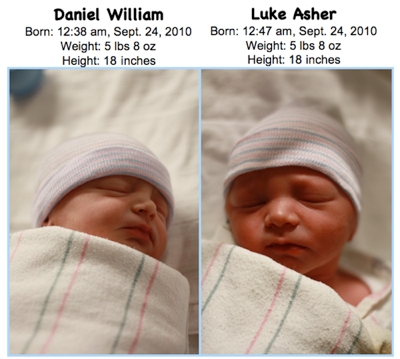
Congratulations to Alyse and Carl Hergenrother, proud new parents of twin boys, Daniel William and Luke Asher. The identical babies (and we do mean identical, as they were born with the exact same weight and height) made their appearance on September 24, 2010. Carl is a Senior Research Specialist at LPL. Best wishes to all!
The High Resolution Stereo Color Imager, or HiSCI, will be one of five instruments onboard the ExoMars Trace Gas Orbiter, scheduled for a launch in 2016. Professor Alfred McEwen is HiSCI Principle Investigator and Assistant Professor Shane Byrne is co-investigator.
HiSCI will be operated by the same LPL team that has been acquiring images from Mars in stunning detail using the High Resolution Imaging Science Experiment, or HiRISE, camera that is orbiting Mars.
HiSCI's color images will be much wider (more than 5 miles) than those of HiRISE (less than 1 mile), which will allow researchers to see much more of the Martian surface and changes that are occurring there.
HiRISE can take images at a finer resolution, but its color-imaging capabilities are limited and it requires two orbital passes, which can be months apart, to acquire a stereo image of a feature on Mars' surface. HiSCI will be able to take a stereo pair of images in the same pass, which eliminates unwanted variation, such as differences in sun angle at the time each image is shot.
In addition to using HiSCI to image previously unknown features, the LPL team plans to take a closer look at features already imaged with the HiRISE camera and other Mars orbital experiments and to search for new candidate landing sites to follow up on new discoveries.
From 1962 to 1973, LPL had its own journal, "Communications of the Lunar and Planetary Laboratory," edited by Gerard P. Kuiper.
Thanks to the efforts of Maria Schuchardt, Elizabeth Moreno, and Ari Espinoza, we've been able to create PDF versions of the approximately 200 articles in this series and place them online.
The articles are available on Space Imagery Center's Journals page.
These are mostly academic articles, but there are also some historical gems in there such as Kuiper's 1962 description of the organization and scope of LPL.
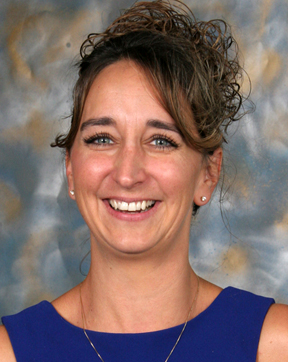 Heather Enos received a NASA Exceptional Public Service Medal this year. This medal is the second highest award that NASA can give to a non-government worker.
Heather Enos received a NASA Exceptional Public Service Medal this year. This medal is the second highest award that NASA can give to a non-government worker.
It is given to "a number of carefully selected individuals who have distinguished themselves by making outstanding contributions to the NASA mission."
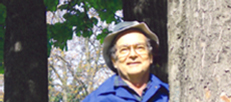 Senior Staff Scienstist Floyd Herbert, a long-time member of the LPL family, passed away on May 12, 2010. He was born in Orange, California and lived throughout California as a child. He graduated from CalTech and then moved to Tucson where he received his Ph.D. in physics from the University of Arizona. Floyd worked at Kitt Peak, briefly at the Planetary Science Institute, and then at the Lunar and Planetary Laboratory.
Senior Staff Scienstist Floyd Herbert, a long-time member of the LPL family, passed away on May 12, 2010. He was born in Orange, California and lived throughout California as a child. He graduated from CalTech and then moved to Tucson where he received his Ph.D. in physics from the University of Arizona. Floyd worked at Kitt Peak, briefly at the Planetary Science Institute, and then at the Lunar and Planetary Laboratory.
His research was focused on magnetic fields interacting with asteroids, Io, and in his last work, extra-solar planets. An example of his innovative work was his 1979 paper in "Icarus,'' with Charles Sonett, then director of LPL, on the heating of asteroids by strong magnetic fields and solar winds. The Herbert-Sonett model offered an explanation of why some moderate-sized bodies, like Vesta, have once-melted igneous surfaces, while larger bodies, like Ceres, appear to have unmelted primitive surfaces. This difference had not previously been explained. The subject of asteroid heating has been somewhat dormant in recent years, but tests of Floyd's ideas may come with the DAWN mission, now sailing toward Vesta and Ceres.
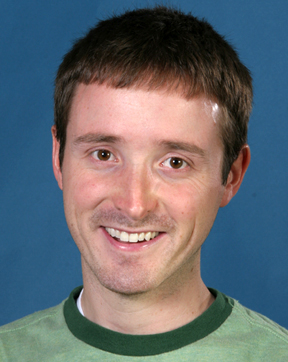 Congratulations to Doug Archer, who successfully defended his Ph.D. dissertation, "The Martian Near Surface Environment: Analysis on Antarctic Soils and Laboratory Experiments on Putative Martian Organics," in April 2010.
Congratulations to Doug Archer, who successfully defended his Ph.D. dissertation, "The Martian Near Surface Environment: Analysis on Antarctic Soils and Laboratory Experiments on Putative Martian Organics," in April 2010.
Congratulations, Doug!
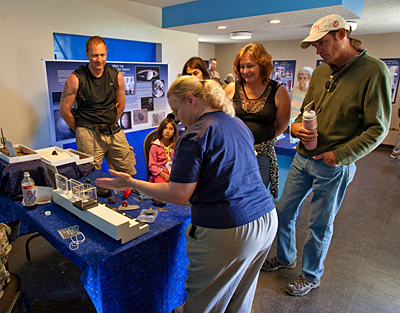
On May 22, 2010, LPL hosted its first ever open day at the Catalina Observatories atop Mt. Lemmon. Approximately 100 guests spent the day learning about LPL's past, present, and future, including a history of telescope observations on Mt. Lemmon and Mt. Bigelow. Featured activities included tours of the Catalina Sky Survey's 60-inch telescope, a presentation about the HiRISE camera, and a walking tour of the old Air Force Station. Visitors got a lesson on meteorites and the chance to handle a 4.5 billion year old meteorite.
There were also exhibits and displays about mountain hummingbirds and the geology of the Catalinas. The event was a big success and lots of fun for everyone! (Photos below courtesy of Steve Larson.)
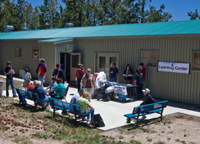
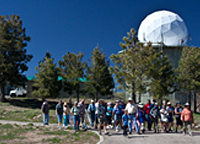
On November 4, 2011, LPL hosted a celebration of a life well lived, to honor the life and career of Michael J. Drake. Approximately 250 colleagues and friends attended. The event was streamed live by Arizona Public Media.
Tim Swindle, acting department head and director, hosted the program. Speakers included Joaquin Ruiz, Executive Dean, UA Colleges of Letters, Arts, and Sciences; Matthew Drake, M.D., Oregon Health Sciences Center; and Eugene G. Sander, President of the University of Arizona.
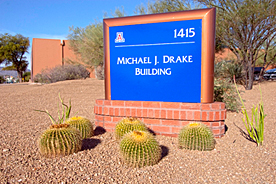 Dean Ruiz announced at the start of the program that the building at 1415 N. Sixth Avenue, formerly known as both the PHOENIX Science Operations Center and the OSIRIS-REx building, had been officially re-named the Michael J. Drake Building.
Dean Ruiz announced at the start of the program that the building at 1415 N. Sixth Avenue, formerly known as both the PHOENIX Science Operations Center and the OSIRIS-REx building, had been officially re-named the Michael J. Drake Building.
Several of Mike's former colleagues, students, post-docs, and collaborators also shared their memories and experiences. Invited speakers included: David Lindstrom, Program Officer, NASA Headquarters (Retired); Elizabeth Roemer, Professor Emerita, PTYS/LPL; Robert G. Strom, Professor Emeritus, PTYS/LPL (recorded comments); Brad Smith, PTYS/LPL Faculty, 1974-1990; John Holloway, Professor Emeritus, Arizona State University; Peter Strittmatter, Dept. Head/Director, UA Astronomy/Steward Observatory; and Joaquin Ruiz.
Speakers representing former students and post-doctoral fellows were: John H. Jones, Senior Planetary Scientist, NASA Johnson Space Center; Melissa Lamberton, MFA Student, Iowa State University (recorded comments); Valerie Hillgren, Research Scientist, Carnegie Institution of Washington; and Nancy Chabot, Planetary Scientist, Johns Hopkins/Applied Physics Lab.
Susan Brew (Manager, Arizona Space Grant Consortium) and Dante Lauretta (OSIRIS-REx PI and Associate Professor, PTYS/LPL) also spoke about Mike's life, research, and legacy to LPL, to education, and to the field of planetary science.
Guests, including many LPL alumni, shared stories and memories at a reception following the program.
On October 22, 2011, the exhibit titled "Mars and Beyond: The search for life on other planets" debuted as the first offering of Science Downtown, a nonprofit organization that has taken up residence in the Rialto Block exhibition hall in downtown Tucson. The exhibit features the science of several LPL research projects, including HiRISE and OSIRIS-REx. Science Downtown is dedicated to offering rotating science-based programs to Tucson and all of Arizona. The "Mars and Beyond" exhibit will run for several months in the historic Rialto Block venue.